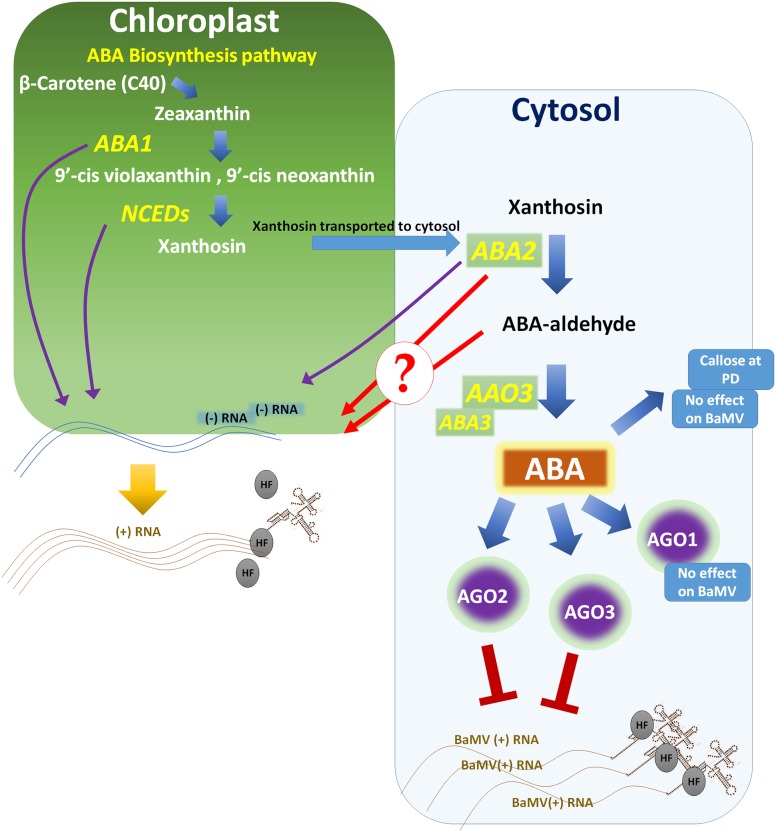FIGURE 2.
Abscisic acid (ABA) effects pathway on BaMV accumulation and plant antiviral resistance. A large part of ABA biosynthesis takes place in the chloroplast. Impairment of genes that function in the chloroplast, such as ABA1 in Nicotiana benthamiana or NCED3 in Arabidopsis thaliana, significantly reduces BaMV levels. The last two steps in ABA biosynthesis take place in the cytosol, where ABA2 coverts xanthosin into ABA-aldehyde and AAO3 reduces ABA-aldehyde to produce ABA. ABA2 mutants have markedly reduced levels of BaMV (-)RNA. Whether ABA2, ABA-aldehyde or other factors controlled by ABA2 are required for BaMV to accumulate is unknown. In contrast, mutation of AAO3 and downstream genes increases susceptibility to BaMV. ABA partially controls the expression of the AGO gene family and induces AGO1, 2 and 3, with AGO2 and 3 but not AGO1 acting against BaMV. In addition, ABA induction of callose is ineffective against BaMV because plants silenced in CalS10 still show resistance after ABA treatment. HF, host factor.

